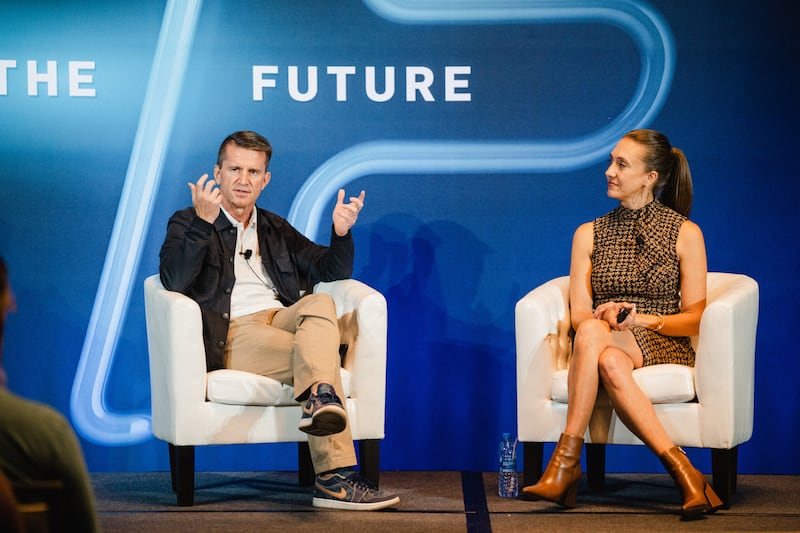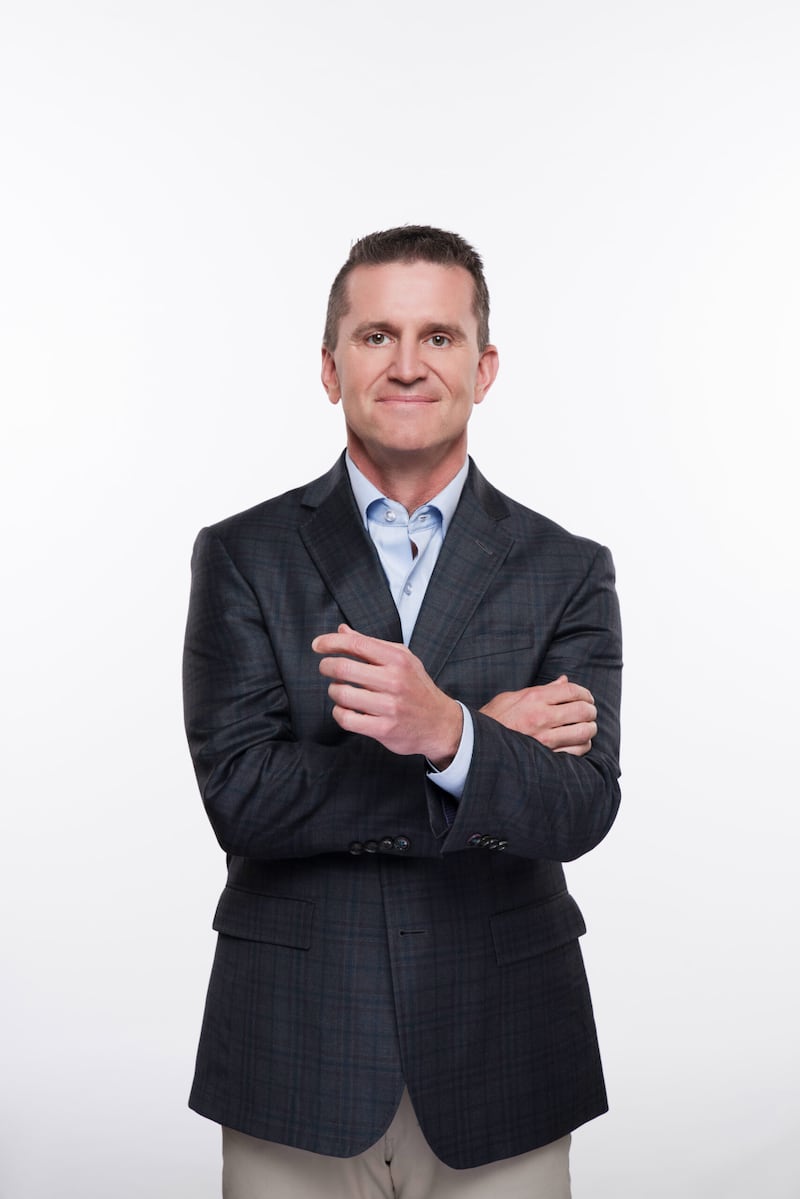This story isn’t really about me as the founder of MasterControl. It’s more about the founding of a successful company brought to life by talented people, essential products and a winning culture.
MasterControl is an industry leader in software solutions that enable life sciences and other regulated companies to deliver life-changing products to more people sooner. For three decades, our products have helped these organizations digitize, automate and connect quality and manufacturing processes.
Like many children of the 1980s, I grew up along with computers and software and was always drawn to the software industry. I even came up with an idea for a business that would empower people and be that computer-savvy friend that everyone needs. You may even see that company one day—it was such a powerful motivation for me that I didn’t entirely abandon the idea.
After high school, I attended the University of Utah to learn accounting and got a CPA. Then, I went to Brigham Young University for a law degree. As I got further into my schooling, my interest in software and tech continued with a focus specifically on business transactions, especially tech mergers and acquisitions (M&A). I went directly from law school to work for a software company that was doing a lot of M&A at the time.
From that point, I was able to work on around 100 software M&A transactions, either as an in-house buyer or as a consultant. I was able to study many different technology companies and understand how they are run. I interviewed dozens of CEOs, usually in the capacity of figuring out how to integrate their company and understand what it’s worth.
In this M&A role, I had an up-close view of many different software organizations. I was able to observe firsthand best practices in engineering, technical support, customer service, licensing, billing and more. As it turned out, building that understanding of what was possible in all the different departments of the company was a good, roundabout way of training for a great opportunity.
My father, Richard Beckstrand, was about to ask me to help him with a project. He is a classic, self-made entrepreneur and one of those rare people who looks at the world through a lens of business and economics, even as early as his high school fruit stand. He’s done everything from drilling for oil to building surgery centers and owning and managing commercial real estate.
He started investing in software companies in the Salt Lake Valley as part of his real estate enterprise under the idea that strong tenants made successful buildings. One of his investments was a company called Document Control Systems—which would later become MasterControl —thanks to connections made during meetings with the MountainWest Capital Network.
In 2002, Richard asked me to bring my experiences and skills to the company as chairman of the board for Document Control Systems. The company had grown to a million dollars in annual recurring revenue, but it had also reached a crossroads. Richard saw the prospects of a strong path forward and decided to buy the company outright.
The decision to buy out the other shareholders happened a bit more suddenly than would have been expected, and there wasn’t time to plan an organized leadership transition. At the time, I
I found myself in the boardroom with all of the employees, letting them know the company had a new focus. I had just announced that the prior CEO was gone. One of the employees asked who was in charge of the company. I was the only board member available at that moment, so I said, “I guess I am."

Paving the way for digitization
I assumed the role would be temporary. I was living in San Jose, California, at the time and was considering what to do with my career path. I figured we would hire another CEO and go back to the boardroom. Richard felt otherwise. As the new owner, he appointed me to lead the company. From that day on, I really was in charge.
After settling into my new role, I was excited by the strength of the management team with leaders like Randall Autry, Brian Curran, Angel Lange and Kevin Ash. Also, the opportunity in quality and life sciences was more significant than I had initially thought. As I better understood the value of our products, customers and team, I found my childhood dream of being part of a software company coming to life.
It was around that time that a regulation called Title 21 CFR Part 11 was adopted by the United States Food and Drug Administration. Before Part 11, all life sciences manufacturing and quality documentation was paper only. Its passage paved the way for digitization in pharma, medical device and biotech. This would set off a major, transformative pivot as we shifted our product focus from general document management to quality and manufacturing for life sciences.
As we expanded into this new industry, we found that the quality problems in pharmaceuticals and medical devices were much more urgent and complex. We rebranded from Document Control Systems to MasterControl and began focusing on the digitization of quality and manufacturing in life sciences.
Although the company was already successful when I took the job of CEO, we still faced all of the challenges of a young, growing business. One example: We started a board meeting on March 31, 2005, and we saw no substantial business across the quarter. In the meeting, we talked about how we were going to retrench, cut some costs and do what we could to make it work.
That same day we had five big deals come in, closing enough business in one strike that we beat our quarterly projection. When we continued our board meeting the next day, it was a completely different conversation. Those challenging and exciting experiences are even more impactful when your company is still small.
In the following years, the business grew by 50 percent per year until the financial crisis of 2008. We had found a wide-open market as life science companies were looking for digital help, and we learned quickly to really listen to our customers.
Paying attention to customers and working closely with them immediately became one of the hallmarks of MasterControl. Our customers are really our product designers. We talk to the people we serve for hours, asking what they need and what we could offer them that would solve their problems. From there, our job is simply building the products.
Richard brought a strong business philosophy of core values and customer experience to the company. From the earliest days at MasterControl, we were big followers of Jim Collins’ books “Built to Last" and “Good to Great." These were a good way for us to focus on building a powerful experience for our customers and establishing a value-based organization even with limited resources.
We also decided that the goal wasn’t to sell software—it was to make our customers successful. If we accomplished that, then we would grow as a result of building a strong reputation. Because our mindset is built around values like customer success, we also embraced tools like “The Ultimate Question,” where the success of your customers and your reputation in the market really determine your growth rate.
Accordingly, our company culture has been to not celebrate when we make a sale. Instead, we celebrate when a customer goes live and is successful with our product. We have a wall of success, and a customer’s plaque goes up after that moment of success instead of after the sale.
One of the most important practices that have propelled MasterControl forward is finding great leaders who could influence the success of the company. I’ve been fortunate to work with many great leaders such as Matt Lowe, Dave Edwards, Alicia Garcia, Michelle Tanner and many more who can take important parts of my job and do it better than I can, whatever that function may be.
Well-timed pivots
Ultimately, the story of MasterControl is one of intelligent, well-timed pivots. We pivoted our industry by moving to life sciences. We have undergone product pivots—including shifting our focus from just document control to overall quality management—involving a much broader product suite and spurring our name change. We have made multiple technology pivots, like moving from a client-server infrastructure to a web-based, shifting from a web-based application to a SaaS application, and from digitizing processes to providing data insights.
With every pivot, especially on the technological side, there have been significant challenges in helping our customers shift. It’s the classic entrepreneur’s dilemma: when your current customers love the product they bought, they can become the anchor that keeps you from going in a new direction.
We have learned that it’s important for companies to keep pivoting because technology is always advancing, especially in the software industry. We pivoted once again as we read the market and understood the need for manufacturing execution software (MES) that would help our customers connect their manufacturing and quality. Our MES is helping customers safely bring products to the market more quickly than ever before and, at the same time, digitizing all of that data for their business intelligence efforts.
Thanks to these vital pivots we have undertaken, MasterControl is now leading the charge in AI and machine learning capabilities for life science quality and manufacturing.
Our adaptability was also important as we considered how we thought about our work. We knew life sciences was a cool industry in which to be involved, but a software company is usually just solving a piece of the puzzle for your customers. It’s easy to minimize your contribution and to not place it in the context of how significant it really is.

Becoming a mission-driven company
We adopted an idea from Simon Sinek’s TED Talk on the Golden Circle: It’s not what you do, but why you do it. “What we do” can seem trivial: fixing a product issue, designing a new feature or onboarding an employee. But “why we do it” is profoundly meaningful—we help our customers get life-changing products to more people sooner.
Right now, in labs around the world, scientists and technicians are making breakthrough discoveries that will save and extend our lives. But each product or therapy has to get through a complex and costly scheme of global regulations to get to market. We shorten the time and decrease the cost to bring these products to market. As we started to talk and think in that way, we realized the significance of our contribution. This has made all the difference in how we see our business. There were companies out there that really couldn’t get a product to market without what we do, and they are incredibly grateful for the services that we provide.
With over 1,100 customers, most people in the world have used a product that has been brought to market with MasterControl. For example, one of our customers creates implants that help people hear for the first time. We also have a great charitable partnership with the Huntsman Cancer Institute, and it’s great to be a part of bringing their life-saving therapies to market. Another beneficiary of our “why” is a customer who creates a synthetic nerve graft for people who suffered severed nerves from an accident.
We are driven by the idea that our contribution is significant and important, and manufacturers can’t get their products to market without it. Once we began reframing what we do in a broader context and making it part of the bigger picture, we became a more mission-driven company. This becomes even more significant when we consider the future of healthcare.
Amazing, personalized therapies are being brought that bring incredible benefits. Many have complex manufacturing processes that carry significant costs. On the other hand, data science (AI/ML) brings additional opportunities to lower regulatory, quality and manufacturing costs and increase speed and patient safety. The opportunity to tackle these kinds of problems keeps us engaged, motivated and excited for our future.

